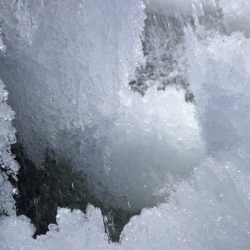
The National Snow and Ice Data Center has just released its latest analysis of Arctic sea ice. The prognosis is not good; The maximum extent of Arctic sea ice occurred early this year, and, at 5.61 million square miles, was the smallest in four decades. The ice extent peaked on February 25th, with extent defined as the total area in which the ice concentration is at least 15 %.
Comparison with 1983 gives scientists an idea of how conditions this year strayed from the long-term average of 5.96 million square miles for the 1979 to 2000 period. According to NASA:
Arctic sea ice, frozen seawater floating on top of the Arctic Ocean and its neighbouring seas, is constantly changing. It grows in the fall and winter, reaching its maximum between late February and early April. It shrinks in the spring and summer until it reaches its minimum extent in September. The past three decades have seen a downward trend in sea ice extent during both the growing and melting season, though the decline has been steeper in the melting season.
This year’s maximum was reached 15 days earlier than the 1981 to 2010 average date of March 12th. Ice conditions have been below average everywhere except in the Labrador Sea and Davis Strait. A late spurt of ice growth is possible, but it is unlikely now that spring sunlight is arriving in the Arctic Circle.
